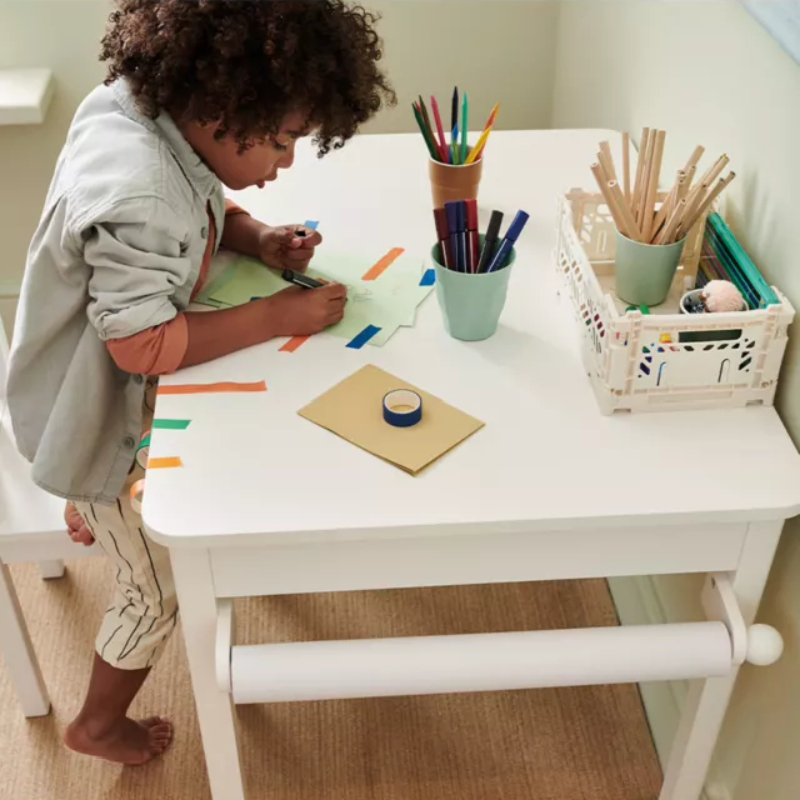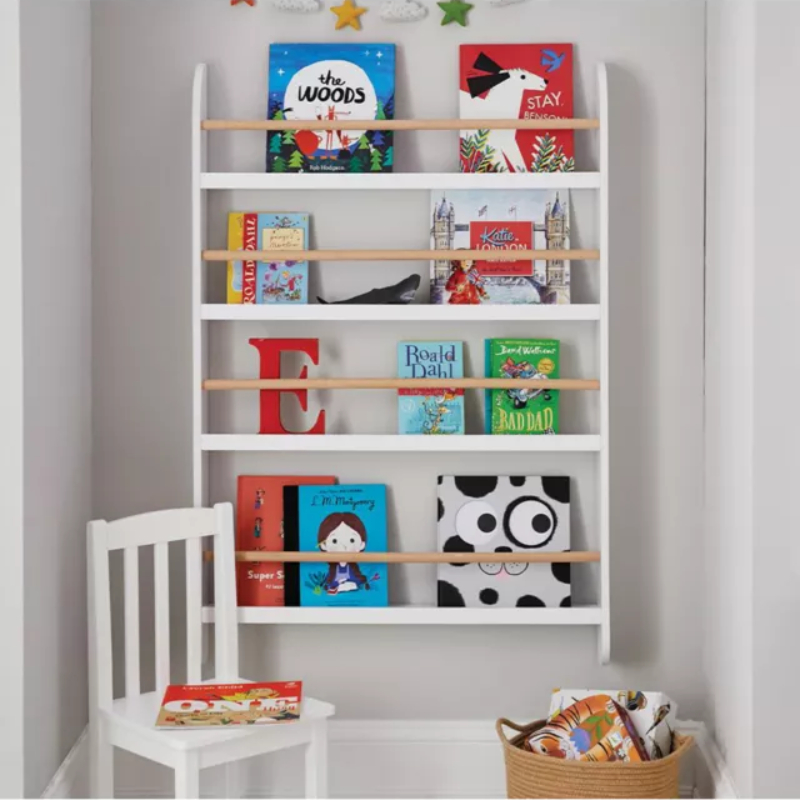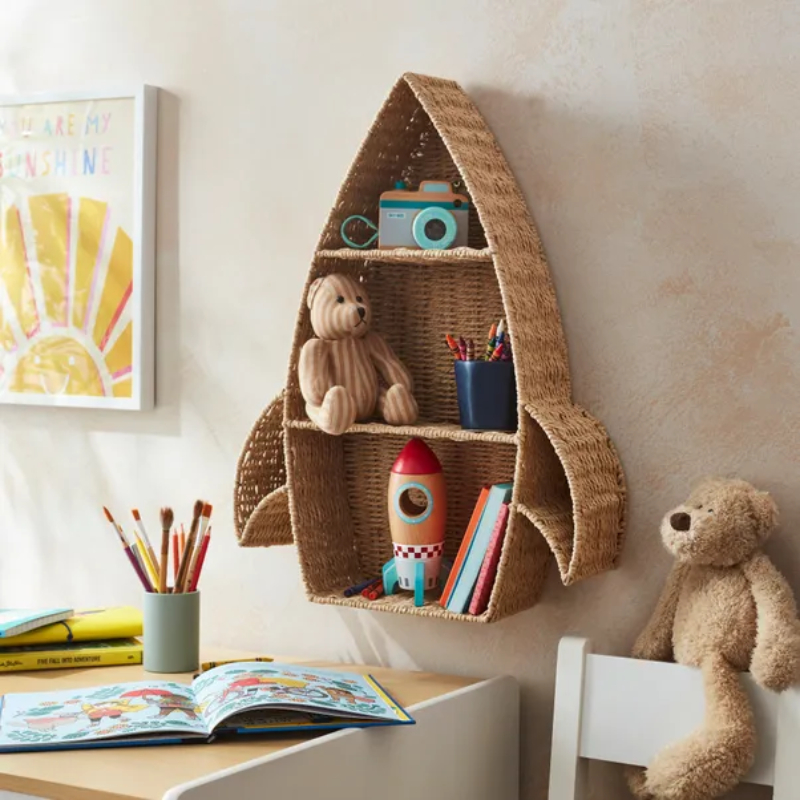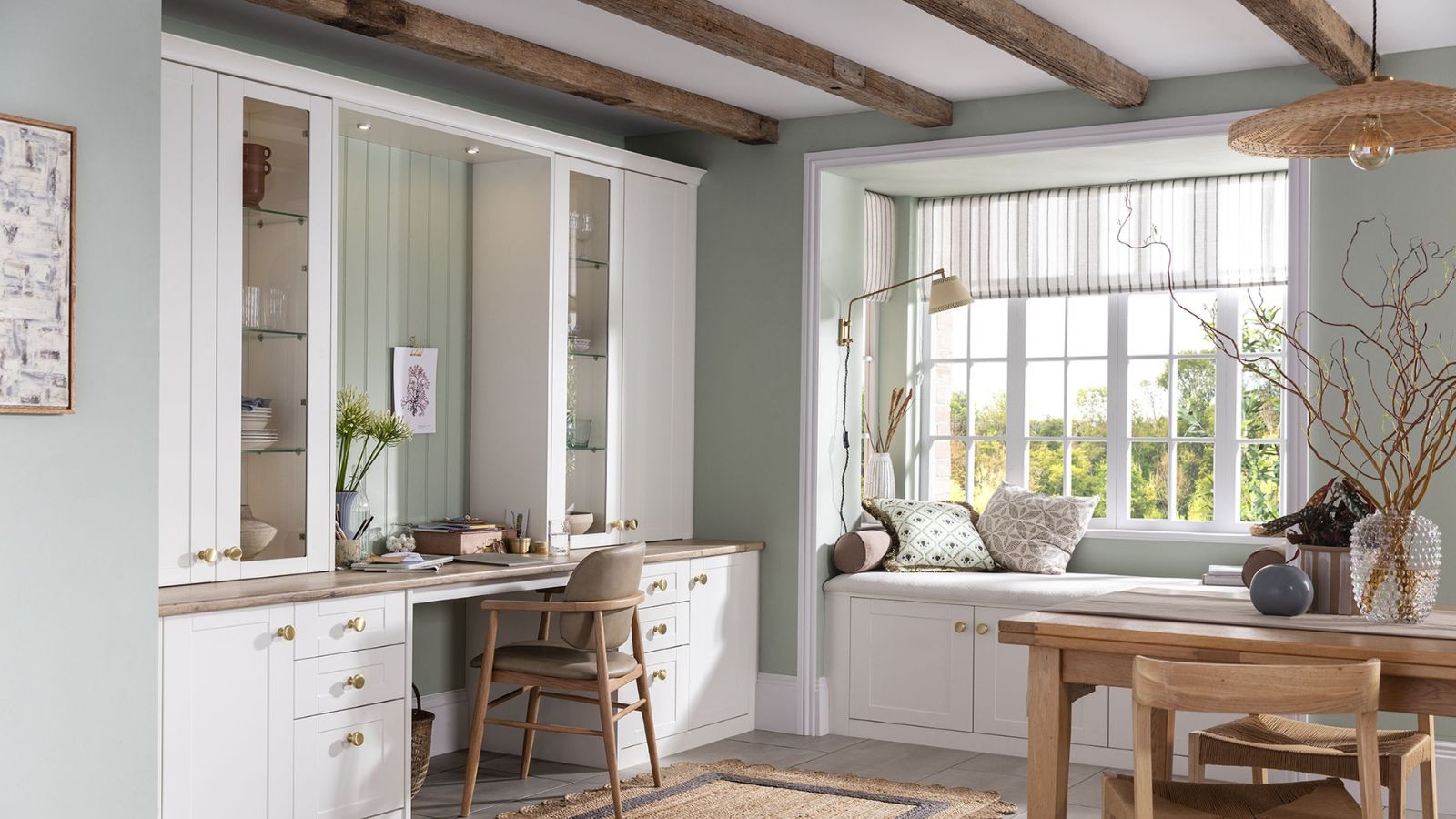Tackling children's bedroom design with longevity in mind
Children's bedroom design may seem like a never-ending expense. We asked the experts how to get the design right so it not only looks good, but adapts as they grow
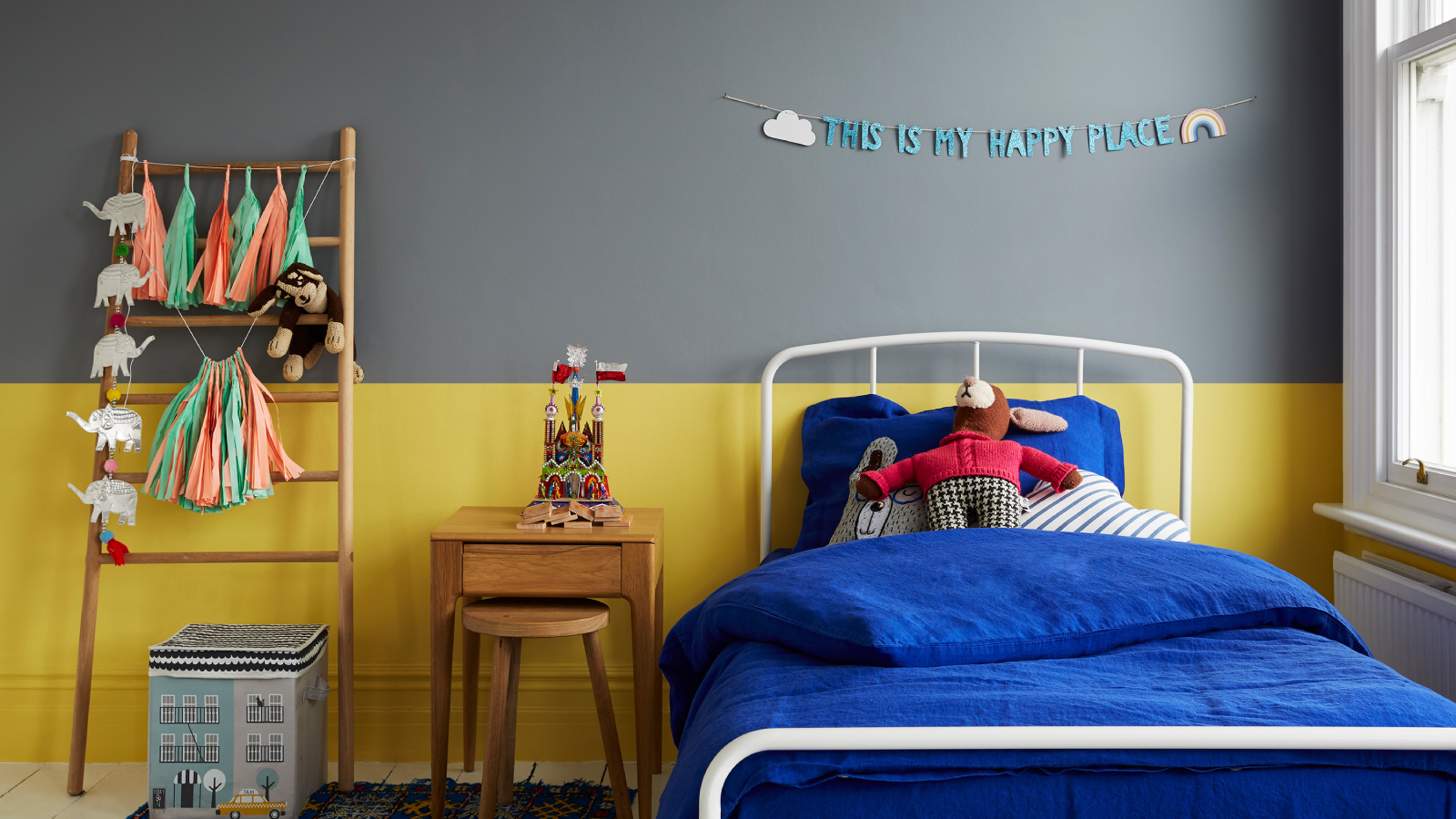
Although it's impossible to achieve a children's bedroom design that will last throughout their entire childhood, there are certain building blocks you can utilise to ensure you create a room they don't grow out of too quickly.
However, with most children's bedroom ideas needing to provide a space that combines sleep, play and study, coupled with the fact they are inhabited by a resident whose favourite trends, colours and themes can change on a whim, we'll agree, it's no easy task.
That's why we asked a number of experts for their advice on children's bedroom design so that the job becomes more manageable. And while it may not be as easy as learning your ABC, the lessons don't need you to sit an exam at the end.
Children's bedroom design should be sleep-centric in the same way as an adult bedrooms
“Designing a kid’s bedroom for optimal sleep can be tricky because each child's needs and preferences are unique," says Charli Davies, Get Laid Beds' sleep Ambassador. "Ideally, a child's bedroom would follow the same principles as any bedroom idea and sleep sanctuary.
“It should be dedicated solely to sleep, free of clutter and distractions like toys, TVs, or a desk and kept dark and cool. However, achieving this perfect scenario isn't always practical," acknowledges Charli.
"The goal is to strike a balance between creating a sleep-friendly environment and ensuring the room feels personal and safe, making it a space where your child loves to spend time and most importantly wants to sleep."
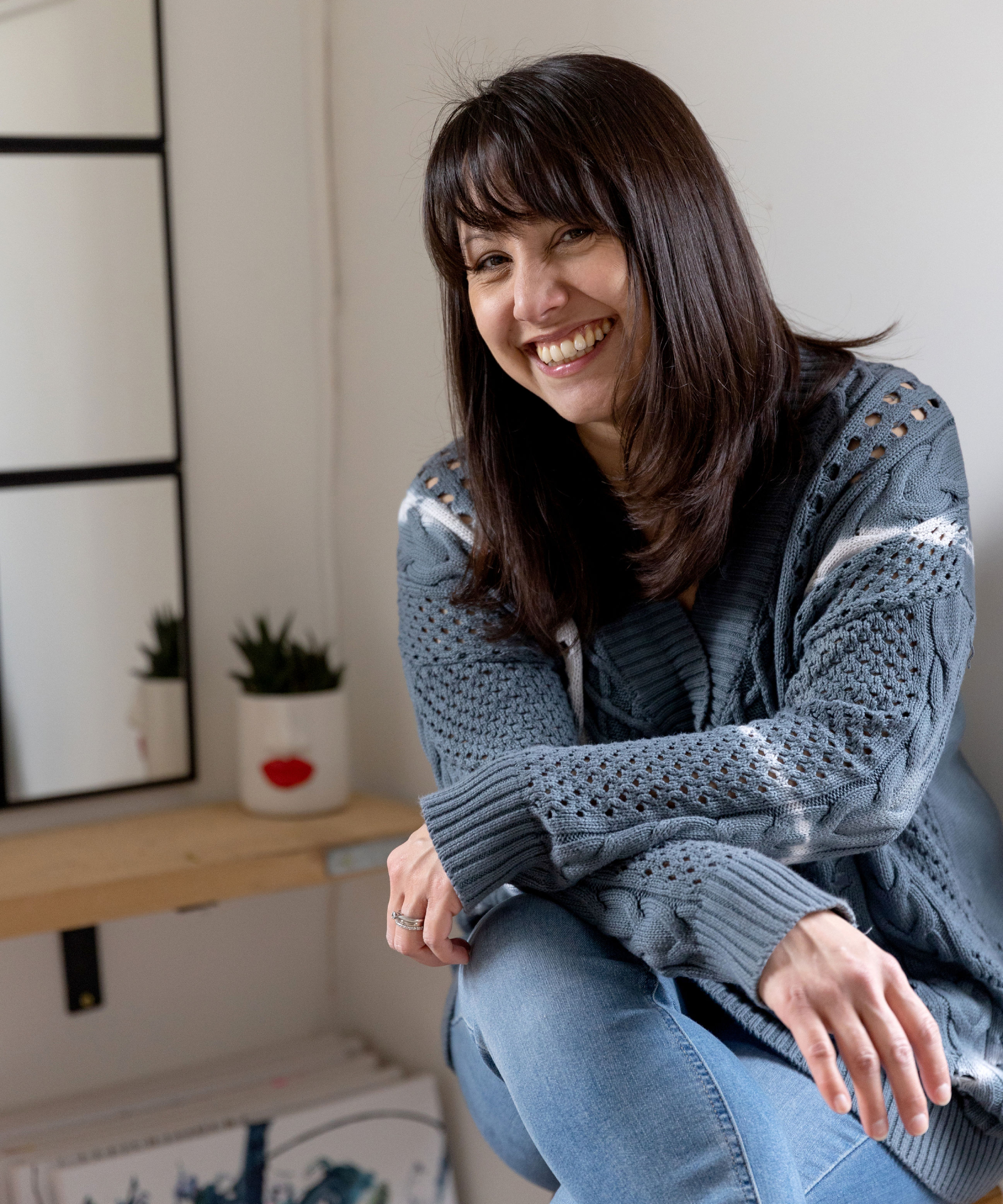
Charli Davies is a certified Adult Sleep Coach and sleep educator. She works with individuals and companies to comprehensively improve their sleep and is a sleep ambassador for Get Laid Beds.
Overall design & decor
Although it can be easy to fall into the trap of gender specific bedroom design when choosing children's bedroom ideas, experts suggest that it can lead to expense and excess changes in the long term.
Bring your dream home to life with expert advice, how to guides and design inspiration. Sign up for our newsletter and get two free tickets to a Homebuilding & Renovating Show near you.
“It's important to design kid-friendly spaces with a long-term view in mind," says interior designer, Matthew Williamson. "Rather than creating a sugary-pink nursery or a jungle-themed room, which may be cute for six months or so, think about next year and the one after that.
"It will mean the bedroom stands the test of time," says Matthew, "complementing the other spaces in your home, and saving you money by avoiding constant repainting and updates to the space as your child grows up."
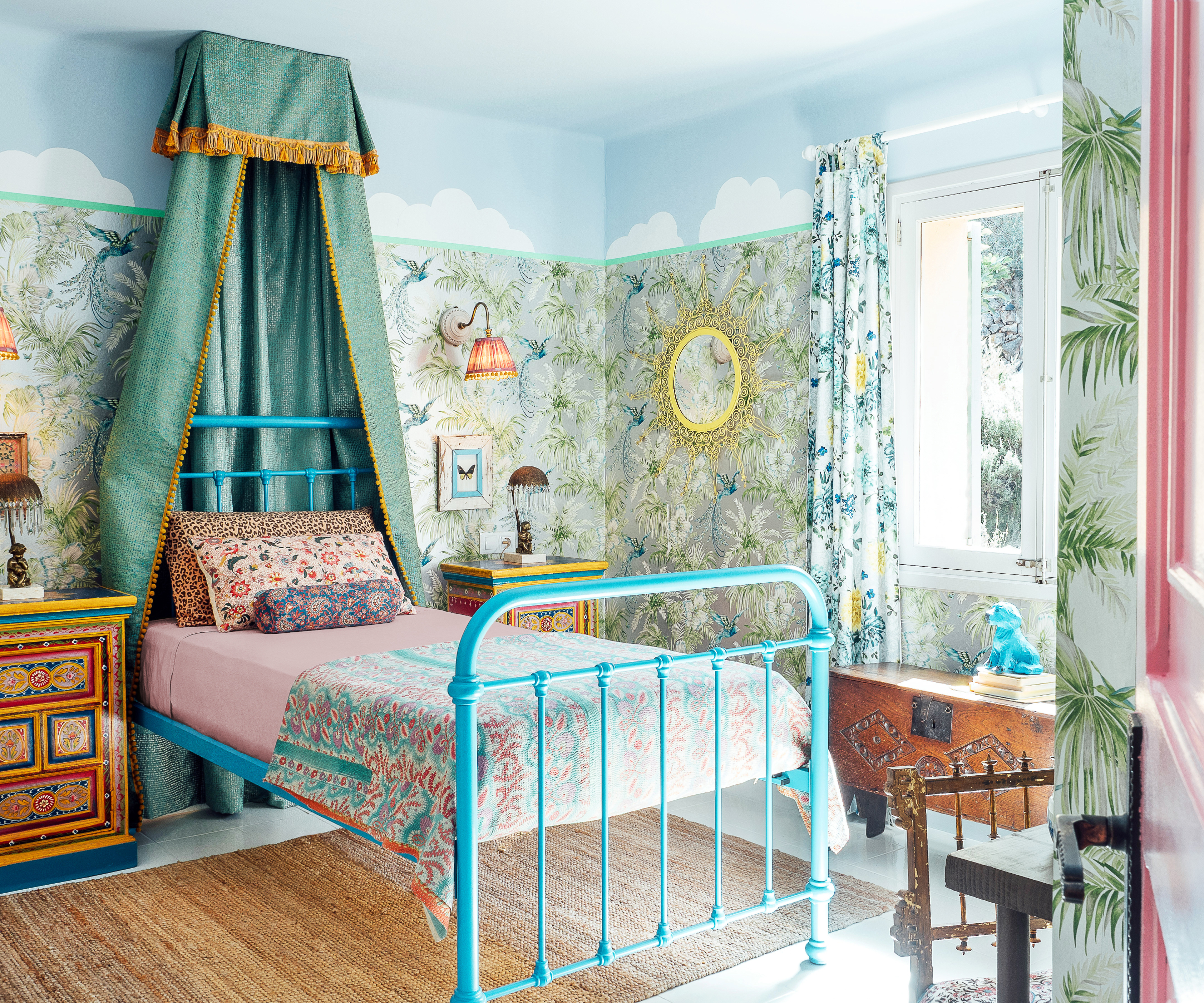

Matthew Williamson is an award-winning British interior designer, known predominantly for his unique and unrivalled use of pattern and colour.
"It's about creating a space that feels effortless and appeals to any child,' agrees Emma Deterding, founder and creative director at Kelling Designs. "The way to do this is by using a diverse colour palette. Soft greens, yellows, warm neutrals and grays are all great alternatives instead of the conventional pinks and blues.
"Incorporating themes like nature, animals or abstract patterns can also help create a balanced look," she adds. "Be sure to choose furniture and decor that is versatile and adaptable, to allow the room to grow with your child. This way, you can promote creativity and individuality without conforming to specific gender norms."
For example, keeping your flooring and furniture neutral, but adding detail through wall decals can be an easy way of changing the design without having to touch the envelope of the room.
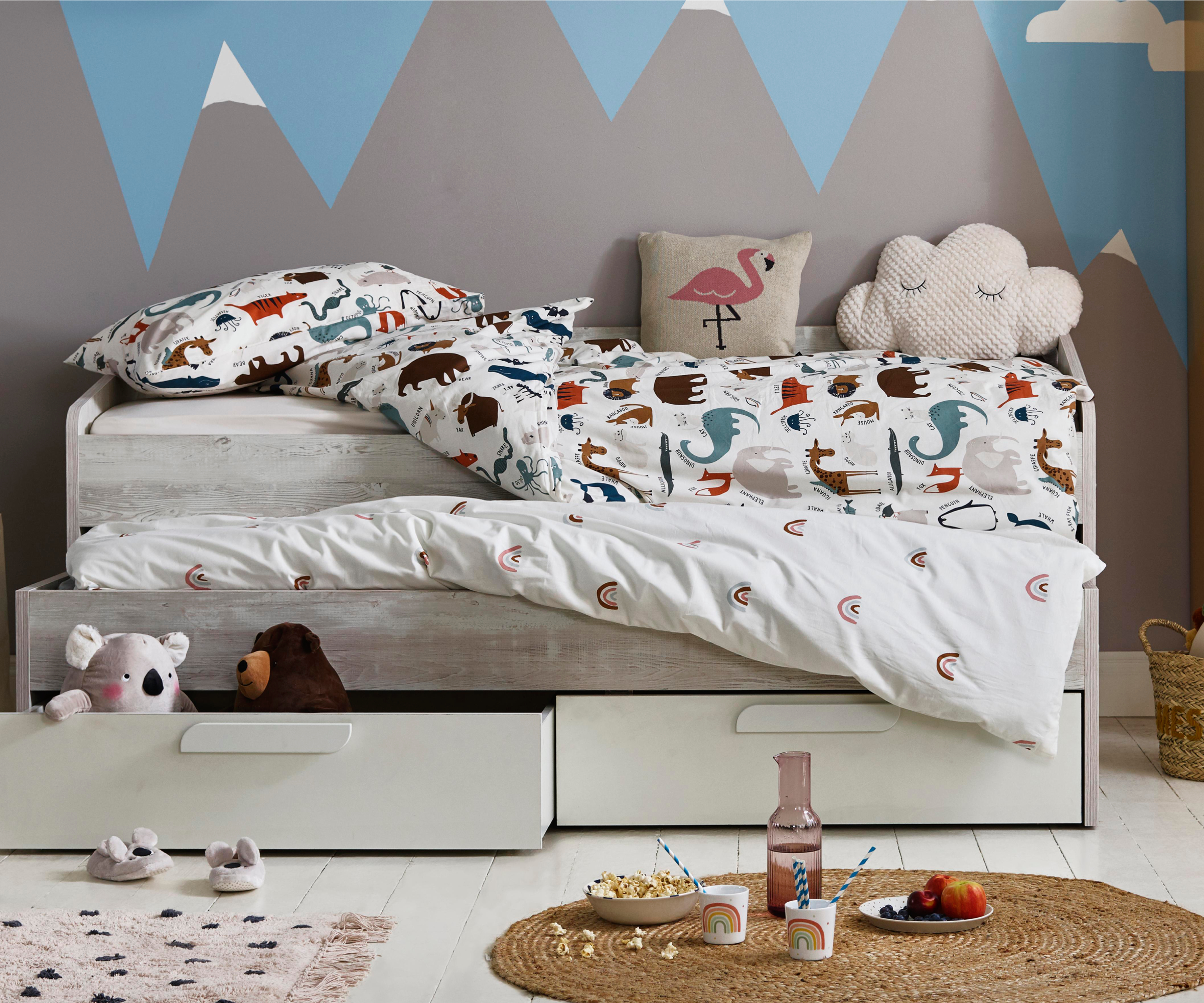
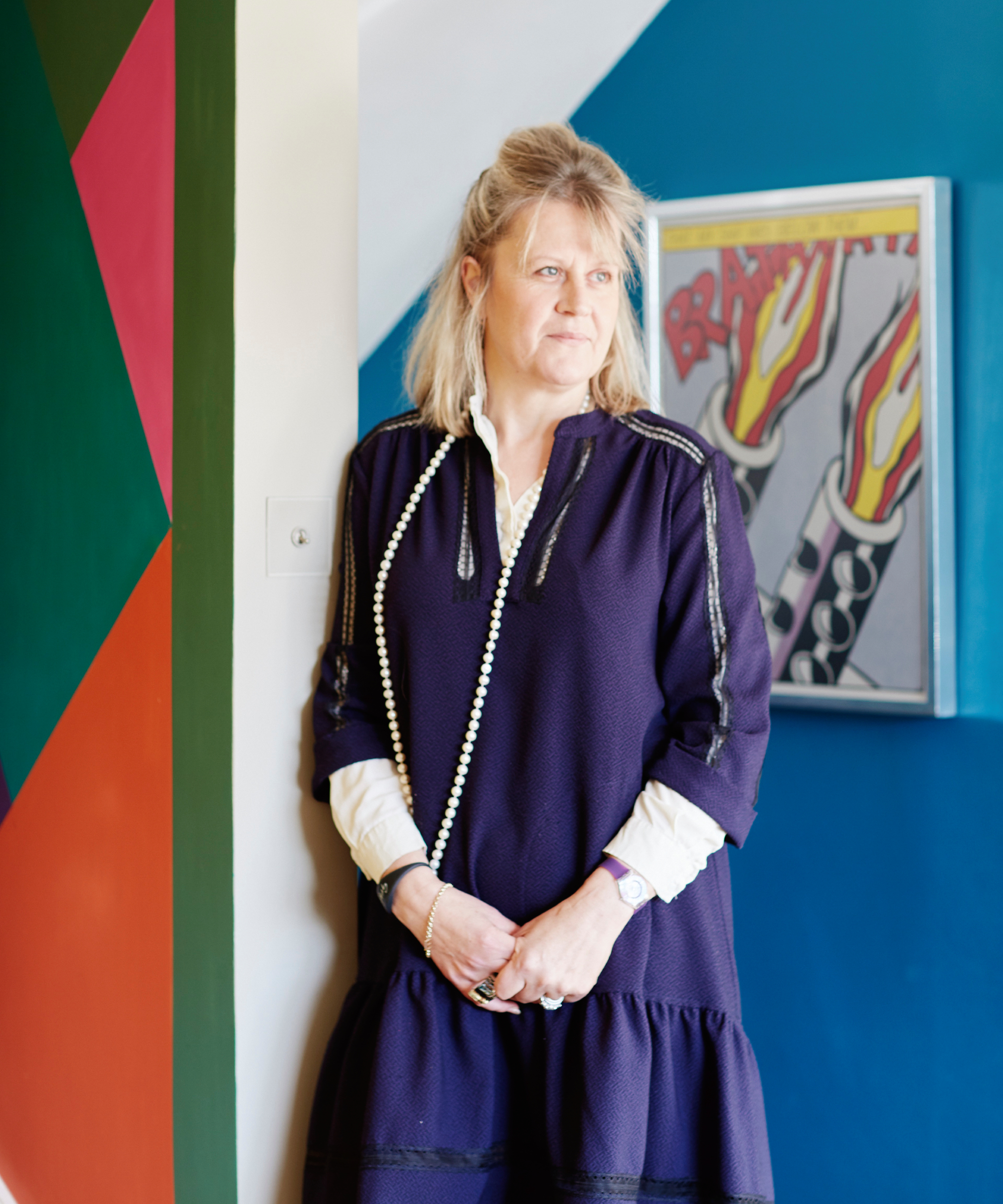
Emma Deterding is a leading interior designer named among the top 100 in the world. With over twenty-five years of experience, Emma creates well thought-out schemes that turn her clients' homes into beautifully designed and practical places.
Combine an adult's sense of style with the practical needs of a child
"Parents are increasingly choosing sophisticated, muted colour palettes and timeless furniture that balance style with functionality," notes Mara Rypacek-Miller, managing director at Industville, and a mother of three.
"The focus should be on creating a space where a child feels comfortable and has a sense of ownership, while still pleasing the discerning adult eye. This trend encapsulates the fusion of style and functionality, offering a room that caters to both the child's needs and the overall design sensibility of the home."
When it comes to encouraging sleep, "bedroom colours are best kept soft, calm and muted avoiding any bright or distracting feature colours that can be stimulating," advises Charli Davies. "If you’re looking for specific sleep-inducing colours pale blues and greens are the way to go."
Of course, as the child's age changes, there will also be plenty of opportunity to change and switch design and decor around, but get the fundamentals of layout, storage, furniture and lighting right and you should have a children's bedroom design that stands the test of time.
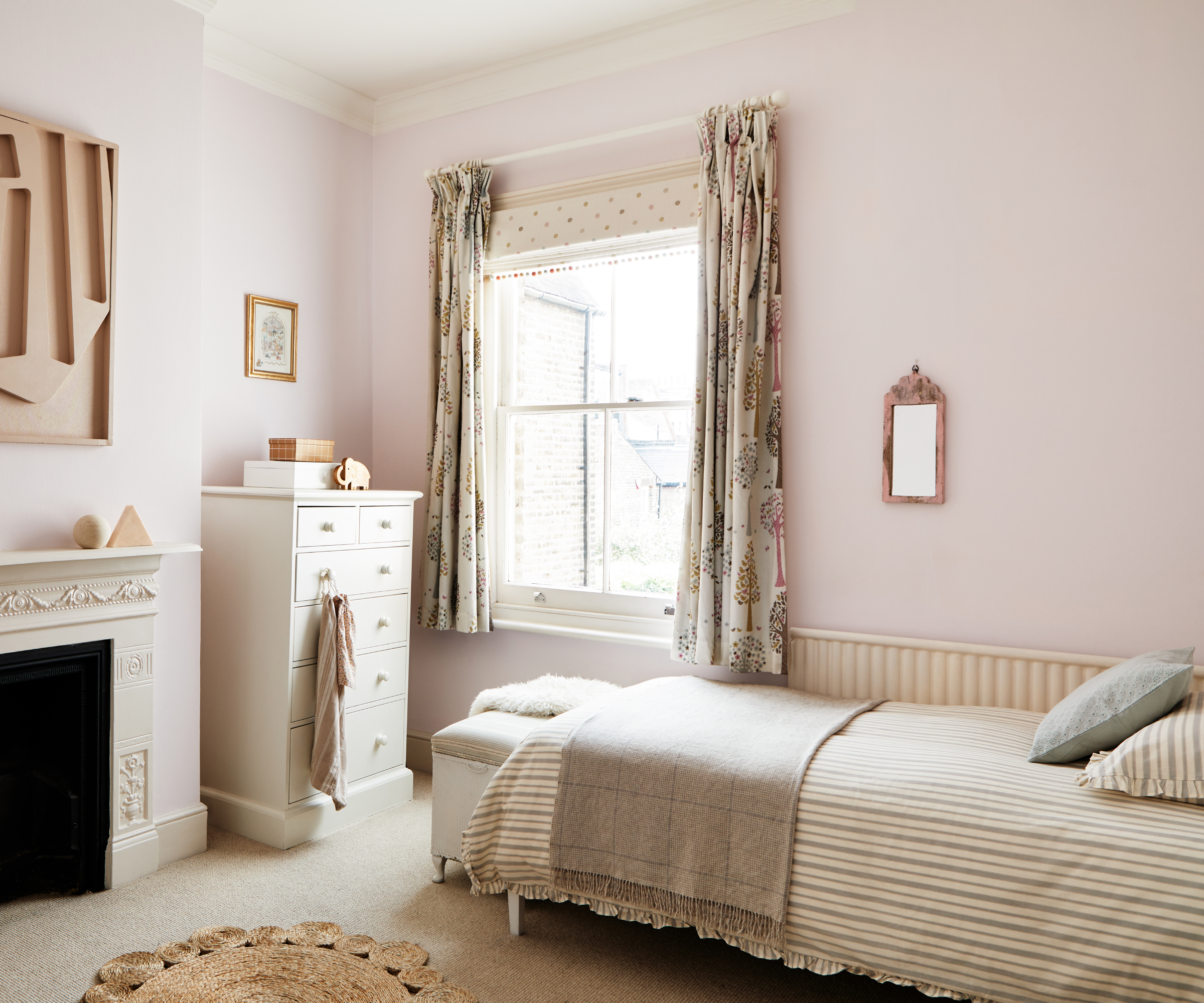

Mara is driving sustainable interior design and is the founder of Industville. With a keen eye for detail and a commitment to eco-conscious craftsmanship, Mara ensures each product's design tells a story of timeless elegance and environmental responsibility.
Layout
Although the layout of a children's nursery is initially focused more around the adult use of the space, as children grow you will need to pay more attention to how and where you position furniture.
Mara Rypacek Miller recommends establishing separate areas for play, study, and relaxation, a zoning approach that works in many multi-purpose rooms.
Emma Deterding suggests that if you are struggling with the room space, "built-in joinery is always a great idea as it maximises on the space available, using awkward spaces in rooms to their best. Built-in cupboards for example can be designed to deal with sloping ceilings or angled walls."
"You will also want to ensure that there is room for your children to move around easily and safely," says Charli Davies. "When thinking about bed placement, putting it against a wall may make your child feel more secure in their bed for sleeping.
"If you can however, avoid placing beds under windows where they may be a radiator or a draft," adds Charli, "as this will help with temperature control. Don’t forget about height too. Building up is also a great way to use a lot of unused space especially for shared kid bedroom ideas.
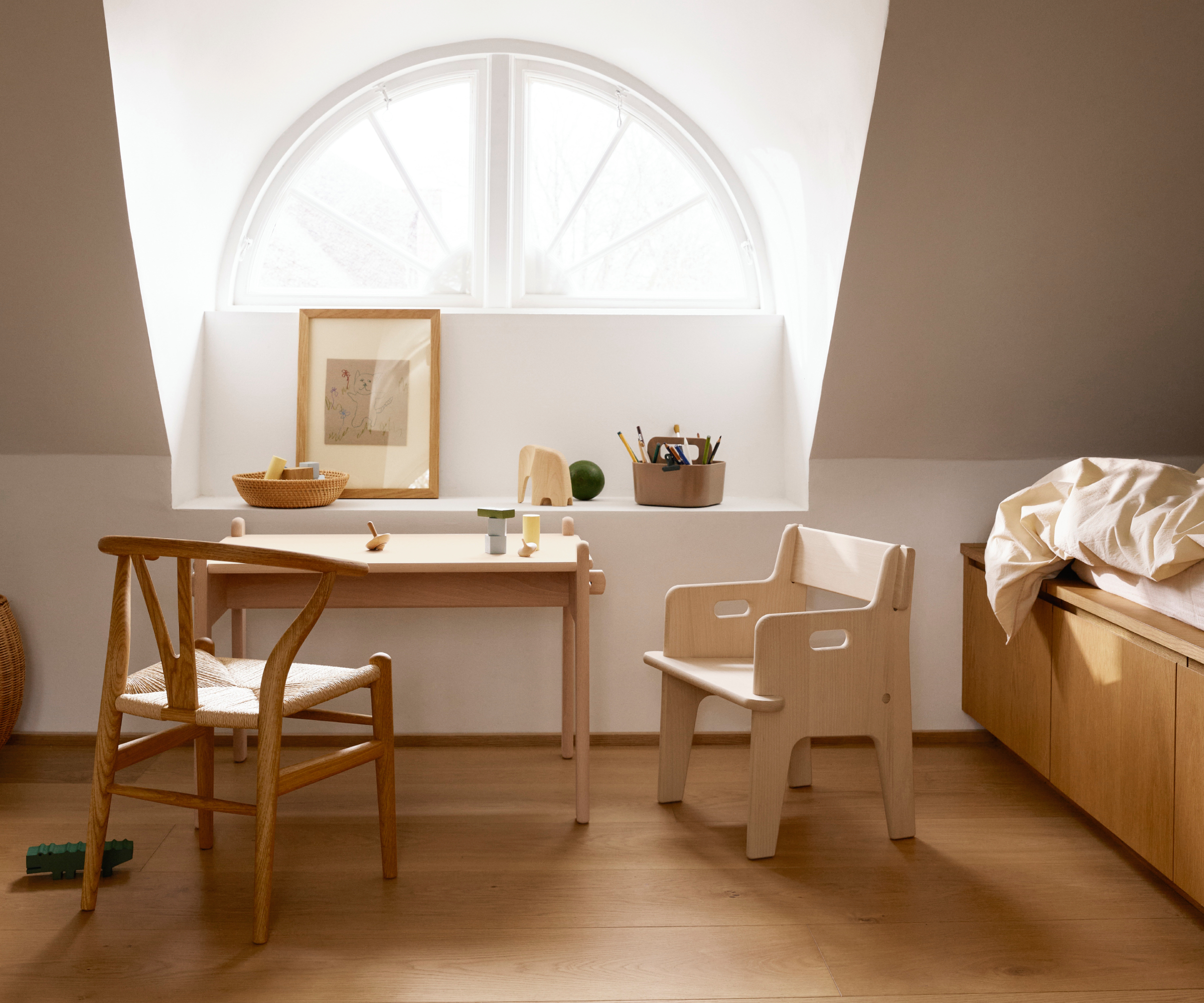
Furniture & flooring
Age is again a determining factor in deciding what furniture you need for your children's bedroom design – after all, when they are babies, they won't need a desk for homework.
But, there are key items that will always be an essential part of the room – regardless of age or gender. The difference comes in that you may not always take a one size fits all approach as you can with bedroom design for adults.
Beds
From cots to toddler beds, singles, bunk bed ideas, cabin beds, loft beds through to double beds when it comes to children's beds, it can feel a bit like replacing school uniform – no sooner have you bought one bed than they need another.
In hindsight, I'd have probably skipped the toddler bed stage. It's a lovely idea, but I personally found it short-lived. However, buy a single bed that is well made and simple in design and you could find it being used for years to come.
Emma Deterding also suggests that when it comes to the bed, "always be sure to choose designs with built-in drawers or ottoman-styles for added storage. Not only will you maximise on floor space, but you'll be able to store other items away with ease such as seasonal clothing or extra bedding and bulkier toys ."
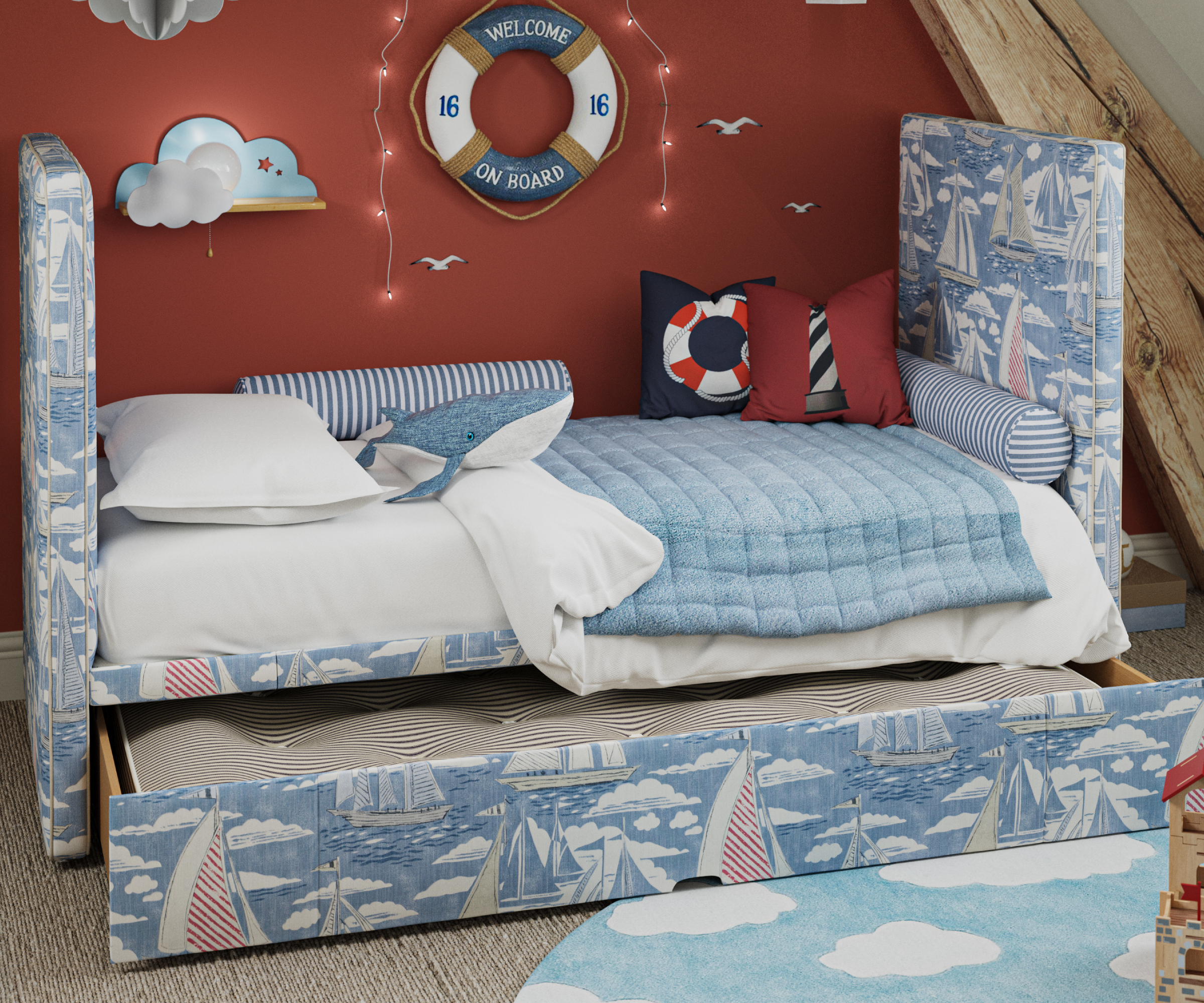
Wardrobes
Baby and toddler clothes are of course much smaller in size which means there are wardrobes specifically designed with this audience in mind. Whether or not you need one is open to discussion. While I'd always recommend low-level accessible storage for encouraging children to start picking out clothes and learning how to dress themselves, this can be achieved with standard wardrobes by simply lowering rails Likewise, it's possible to use open-cubby style units with lightweight storage baskets for smaller items of clothing.
Of more importance with any larger furniture is the safety element. Always make sure that if the manufacturer recommends you secure items to the walls, you follow the instructions. It can be easy to dismiss it as unnecessary, but children who may not have shown any interest in climbing can switch from being sedentary to wanting to scale Mount Everest overnight.
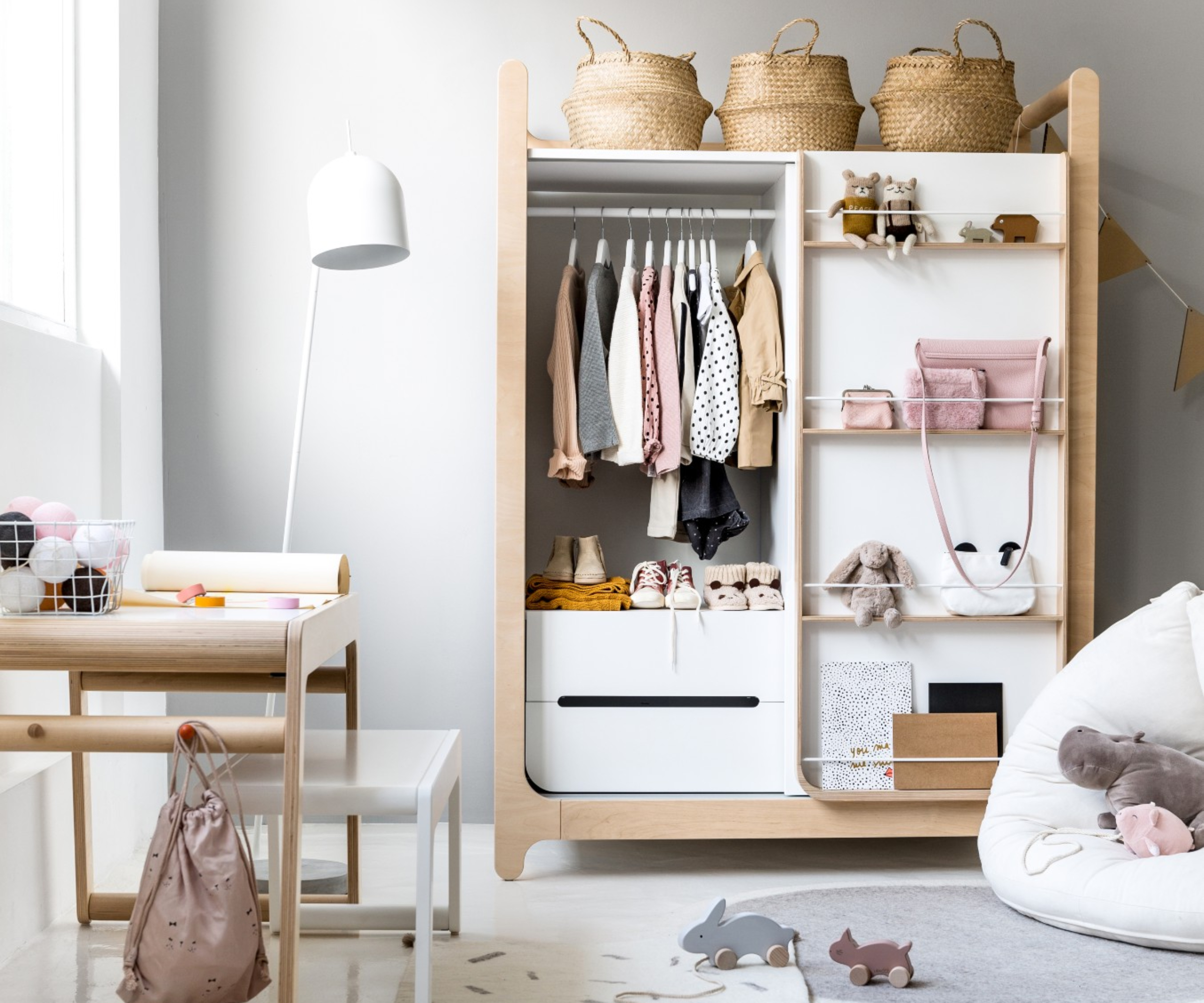
Play furniture
"In terms of furniture, a desk or table space for arts and crafts, comfy seating and a good rug is key," says Emma Deterding. "Kids like to play on the floor so ensuring that there's a comfortable space for them to play is ideal. A window seat with built-in storage or an ottoman footstool will also not only provide extra seating, but also provide ample storage for bulkier toys.
"You could even hide a desk space behind a cupboard door," suggests Emma, "something your child may not need now, but will need for studying as they grow up. Or, why not consider a fold-down desk if space is at a premium, it'll fold flat to the wall when not in use, and fold out and down when the desk space is needed."
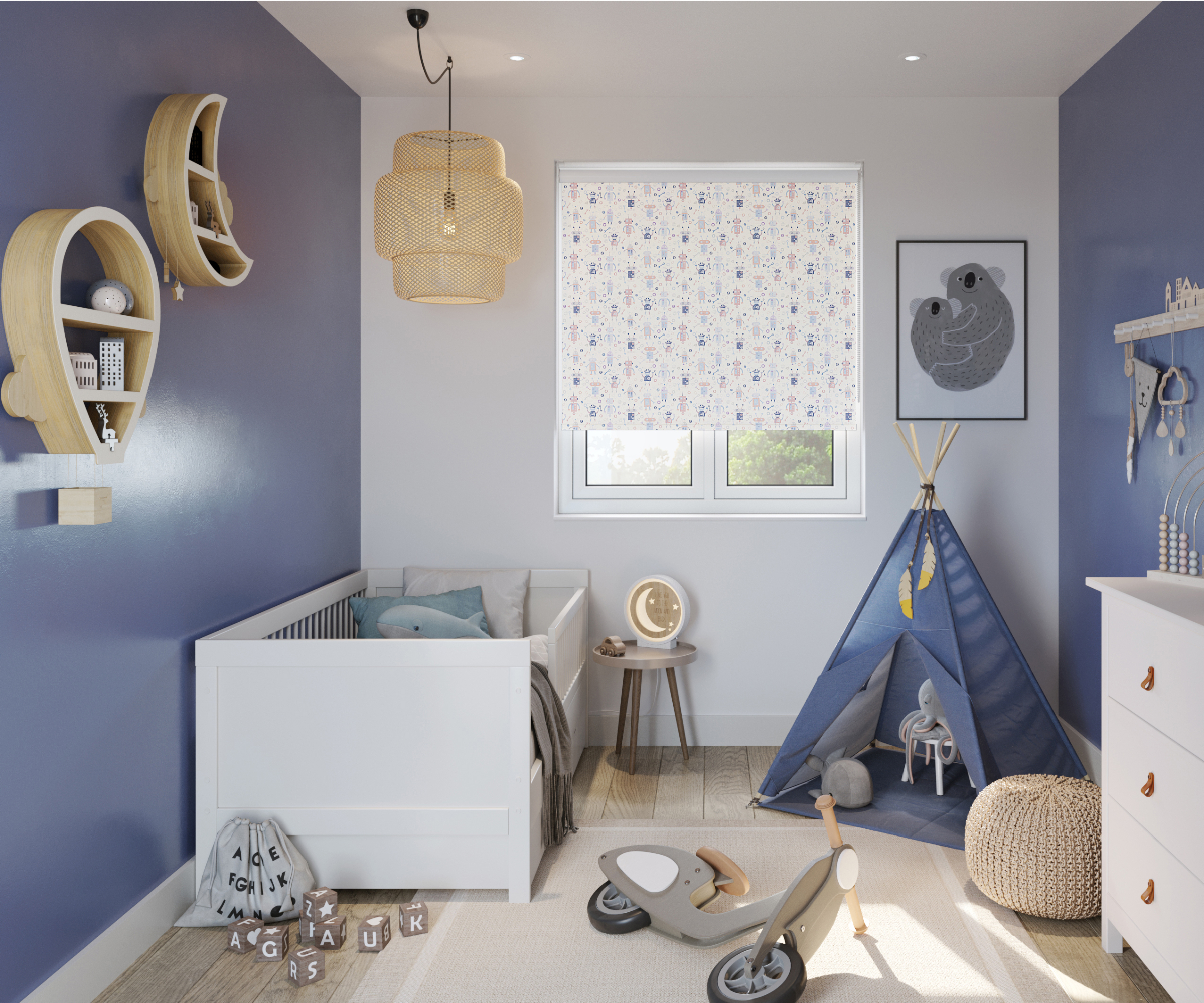
Some of our favourite children's furniture and storage ideas
Flooring
“When choosing carpet for a child's bedroom, it's important to look for textures that are soft on small feet but durable enough for intense play," says Kirsty Barton, brand storytelling manager at Alternative Flooring.
"Expecting mess is wise, so choosing fibres that are easy to clean would be a smart decision. Synthetic carpets shouldn't be overlooked, they are an excellent option for family homes. Offering a perfect balance of durability – stain resistance, comfort, adding both interest and texture to any space," says Kirsty.
"Also consider using a textured rug for play as this could add colour, sensory texture and protect your carpet.
"Creating a safe and fun environment is of course essential for a child's bedroom," she says, "but when selecting colours and patterns, choose designs that won't clash with their ever-changing tastes and will stand the test of time.
"A lighter coloured carpet can keep the room bright and playful, making a smaller space feel larger, whilst darker shades can create a cosy atmosphere. For the best of both worlds, incorporate a subtle pattern that introduces colour in a practical and timeless way, creating a space that is both functional and delightful for little ones.”
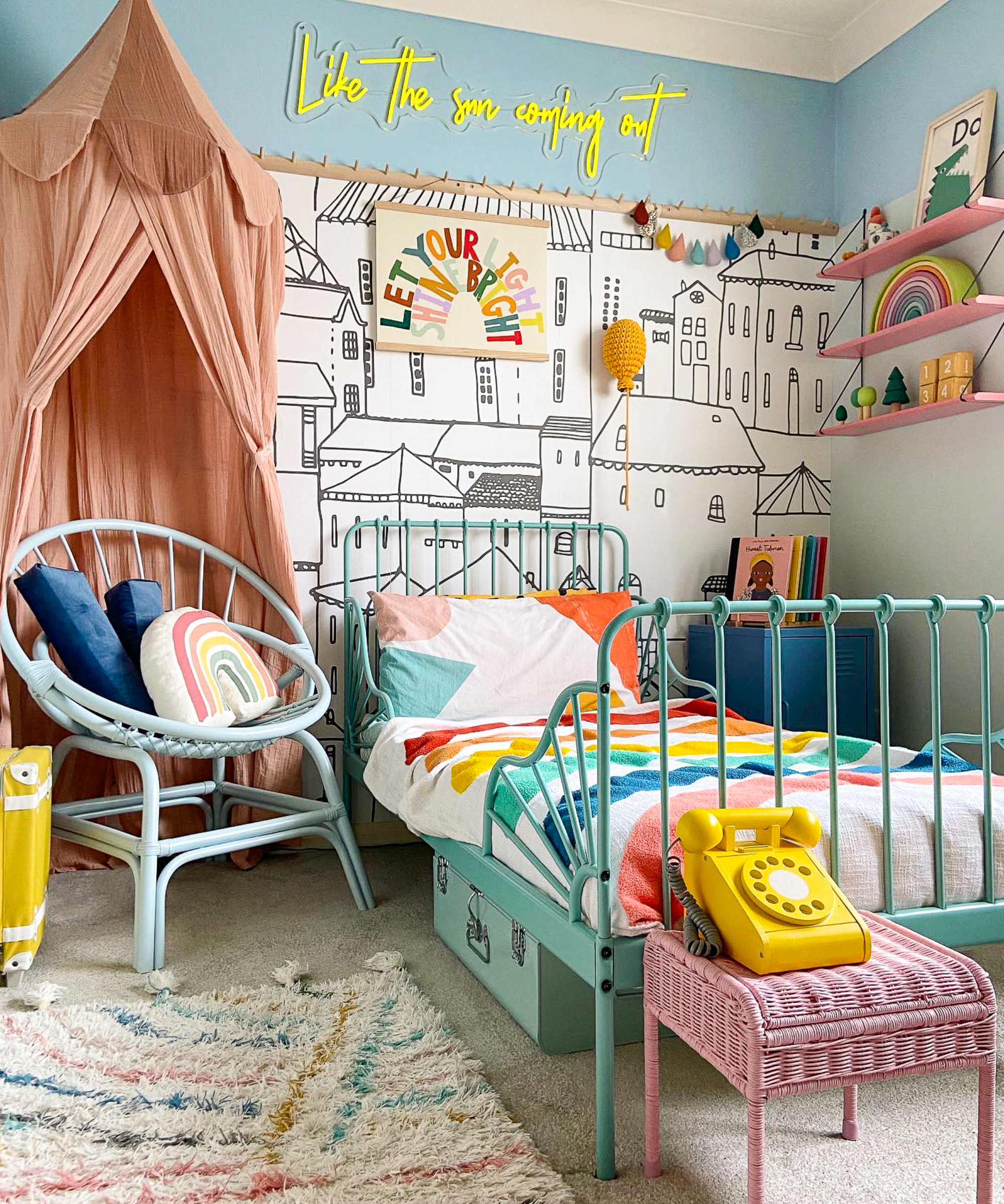

Kirsty has been working at Alternative Flooring for over 20 years and her comprehensive experience across different areas of the business have been instrumental in shaping Alternative Flooring's brand identity. As a Brand Storytelling Manager, Kirsty is committed to the company's core pillars: people, product, and planet.
Storage
“Keeping your child’s bedroom orderly and clutter-free can be a challenge, but simply installing the right storage can help to resolve this," says Bo Hellberg, chief marketing officer at String Furniture.
Getting the right storage in place is also important for encouraging sleep says Charli Davies. “Storage solutions that allow everything to be tidied away each evening means that when your child enters the ‘sleep zone’ that is what they will do there as they’re not distracted by any other activities in other parts of the room."
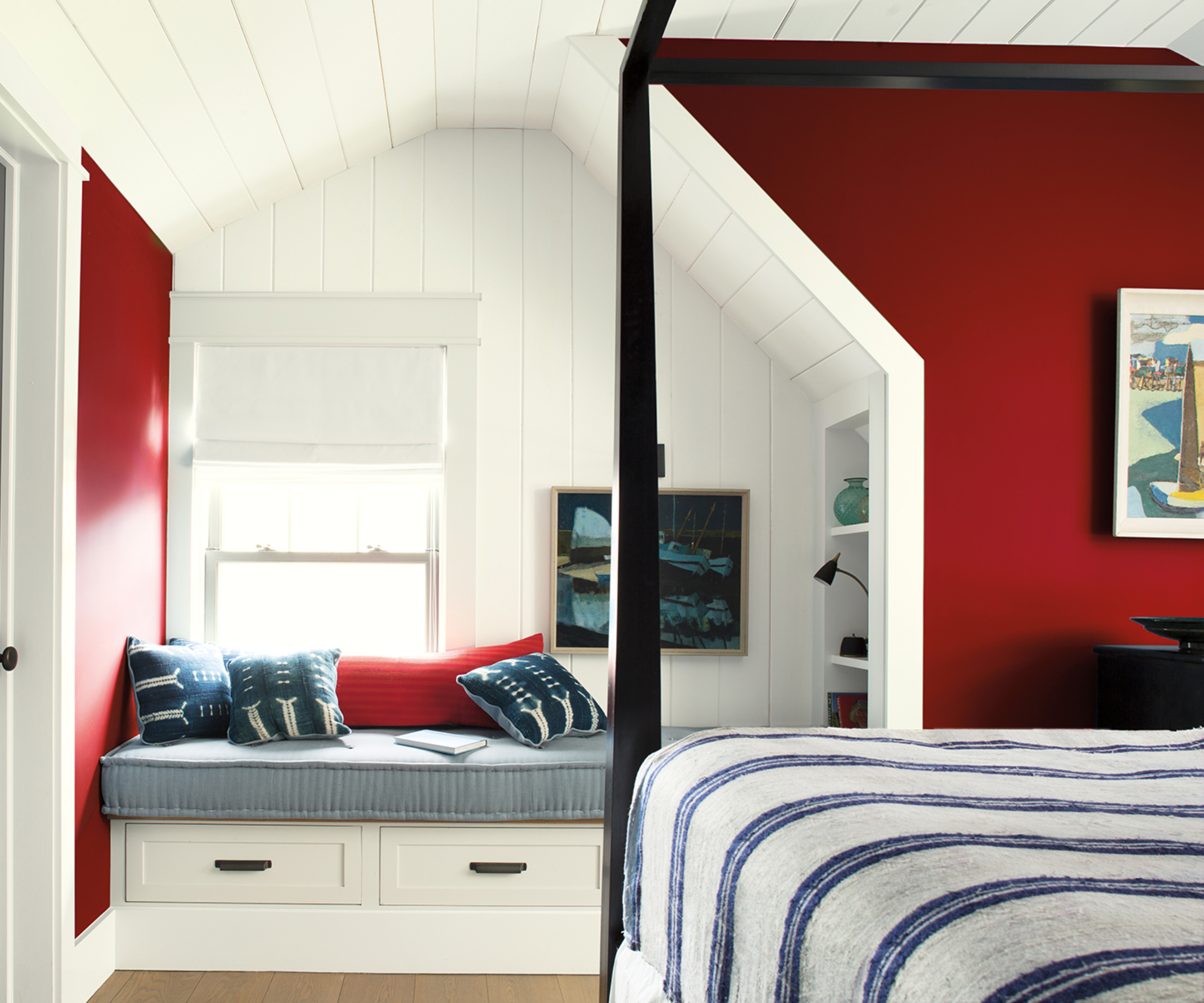
Regularly declutter
"The approach that worked for me and that I recommend to young families," says Matthew Williamson, "is to do some regular decluttering and recycling of what comes in, and have practical storage solutions in your child’s bedroom that don’t dominate or take over the space and that look good too.
"A wooden fruit crate is great for storing books on a chest of drawers, a galvanized bucket can be used for crayons and paints, and a carved wooden chest can house bulky toys, doubling up as a side table when playtime is done," suggests Matthew. "I favour storage that isn’t brightly coloured or plastic, and that is purpose-built. Go for storage that’s attractive to look at, blends in with your interior and can easily be moved around."
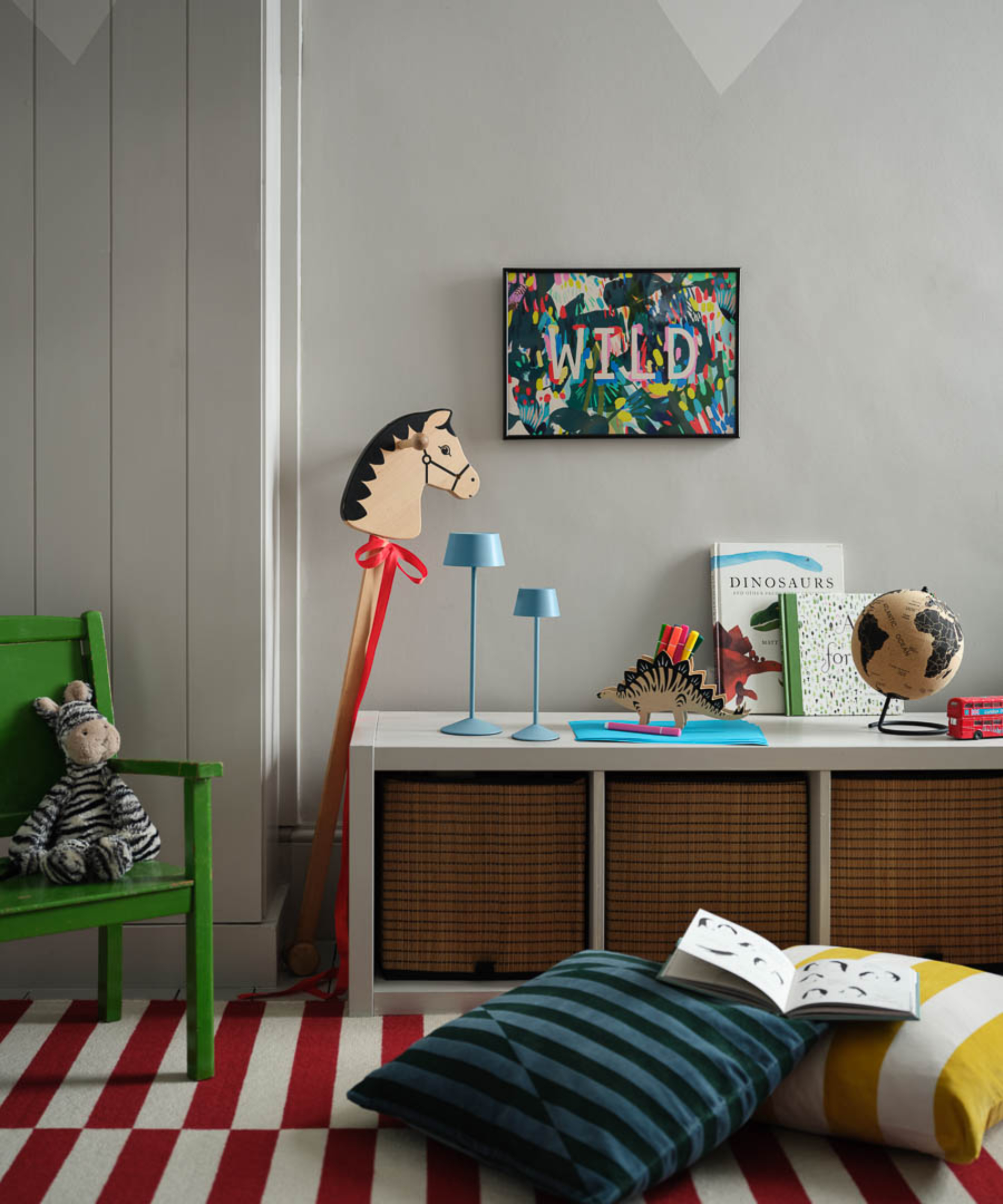
Built in vs modular storage
As with your main furniture, when it comes to storage, built-in or bespoke can be a worthwhile investment says Emma Deterding. "Consider building multi-functional shelving units to store books or display your little ones favourite toys and memories in an alcove, doors can be included at the bottom to hide away other toys and items that don't need to be on show all the time.
"By concealing as much storage in your built-ins, you'll be able to keep everything organised and leave the rest free for relaxing and play."
Alternatively, consider storage that can be changed to adapt to your child's needs as they grow, says Bo Hellberg. "As adults, we would naturally fit shelving at our own height, but installing it so that your child can easily reach items from it is much more effective.
"As children get older, their storage needs change," adds Bo. "Using a modular shelving system for example, means you have the flexibility to curate a configuration that grows with your child, and their equally expanding toy collection.
"Toy storage boxes can be replaced with open shelving to create an integrated bookshelf or a crafts station can be transformed into the perfect space for tackling homework. The range of cabinets available also gives the neat option for hidden storage so not everything is out on display."
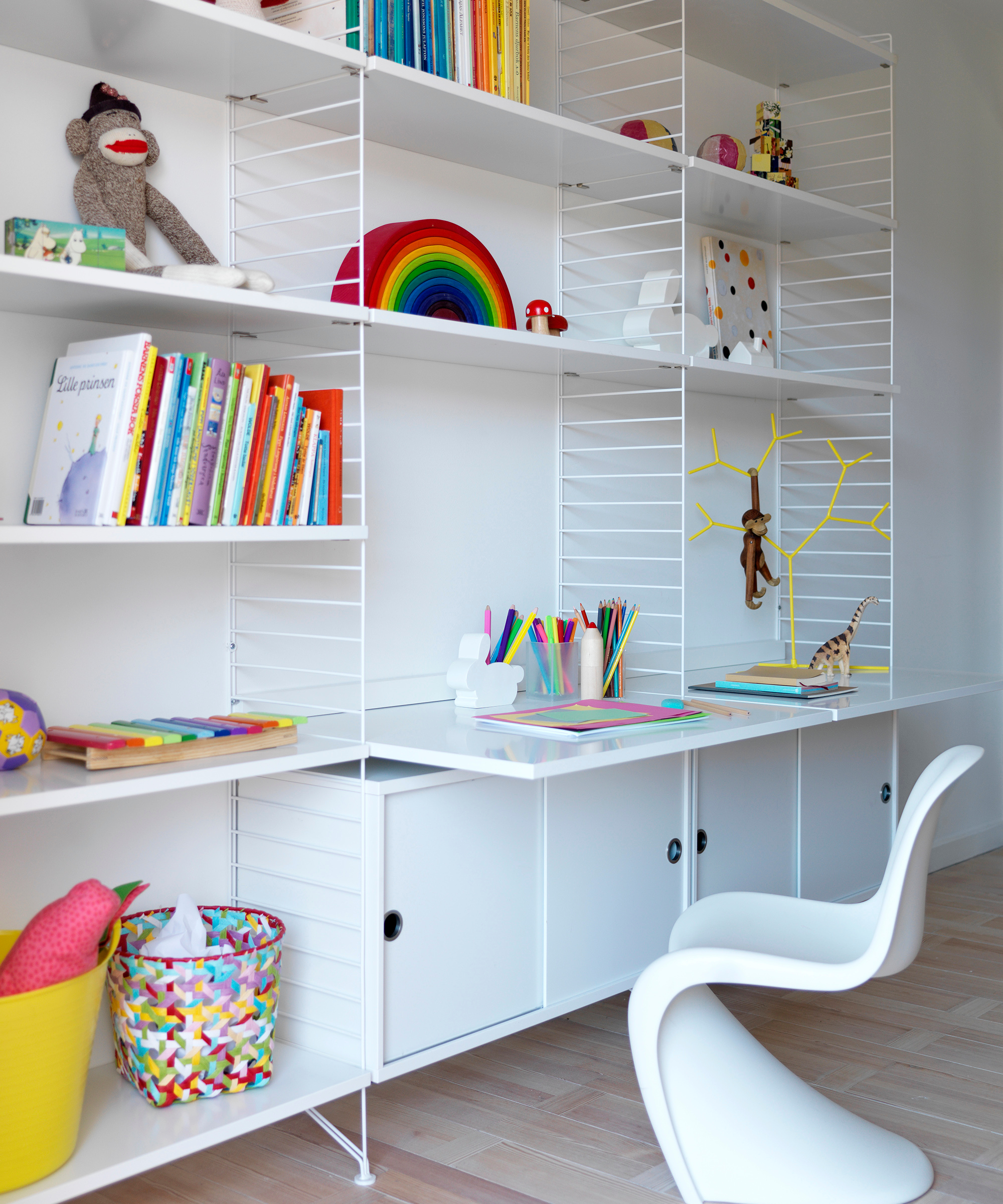

Bo Hellberg is the chief marketing officer at String Furniture, the storage company hailing from Stockholm, Sweden. In 2020, String Furniture was awarded Furniture Supplier of the Year, but the basis of String's designs has shaped storage habits since 1949.
Windows & lighting
Windows
Although natural lighting is a must for daytime play, it's also something you will likely want to diminish at night to engender sleep. Consider blackout blinds combined with curtains or shutters for maximum darkness, but be sure to opt for cordless blinds to avoid any issues with hanging cords.
Remote or automated options could be another option while children are younger in order for you to have more control over when the blinds and curtains are opened.
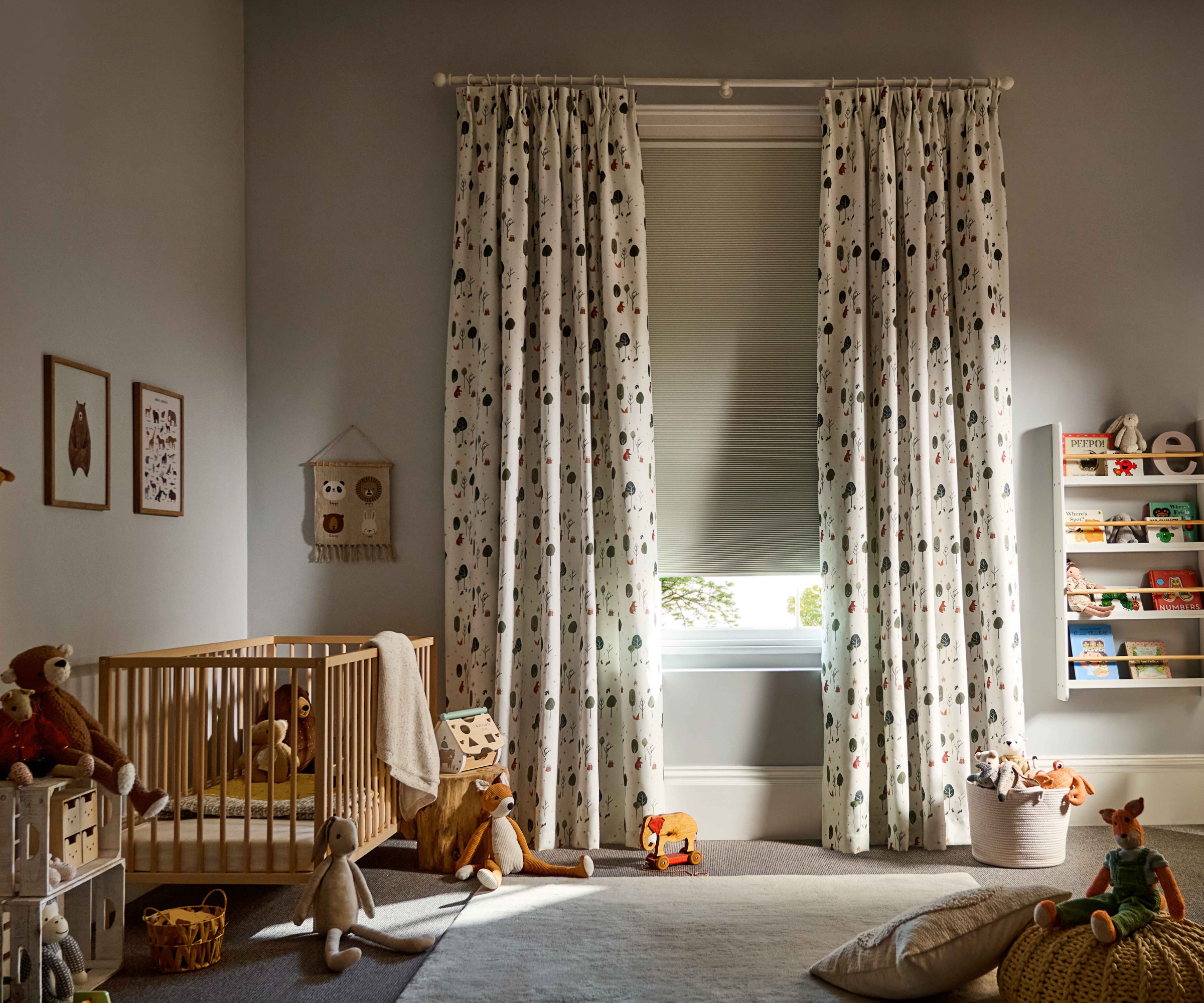
Lighting
It can be easy to dismiss the need for a proper lighting scheme when it comes to a child's bedroom, but experts say it's still important to get it right - even if your children are younger.
Mara Rypacek Miller's top tips for lighting in children's bedroom design are:
- Opt for adjustable lighting - install dimmer switches or smart lighting systems for flexible brightness
- Incorporate task lighting - essential for homework and reading, task lighting prevents eye strain and enhances focus
- Include ambient lighting - ceiling lights provide overall illumination for the entire room
- Use creative lighting for play - interactive or colourful lights stimulate creativity and add a playful touch
- Personalise the space - involve the child in choosing lighting fixtures or themes for a sense of ownership
- Stick to a timeless design - opt for designs that grow with the child, favouring sophistication over fleeting trends
- Invest in quality - high-quality, durable lighting fixtures are a valuable long-term investment
- Focus on safety - ensure all lighting fixtures meet safety standards for a child's room. Avoid floor lamps that can be easily knocked over
- Add lighting to storage - integrate creative well-lit storage solutions that are easily accessible
- Choose eco-friendly options - select lighting fixtures made from recycled or sustainable materials
- Create dedicated spaces - use lighting to establish separate areas for play, study, and relaxation
- Balance style and function - select lighting aligned with the overall design of the home
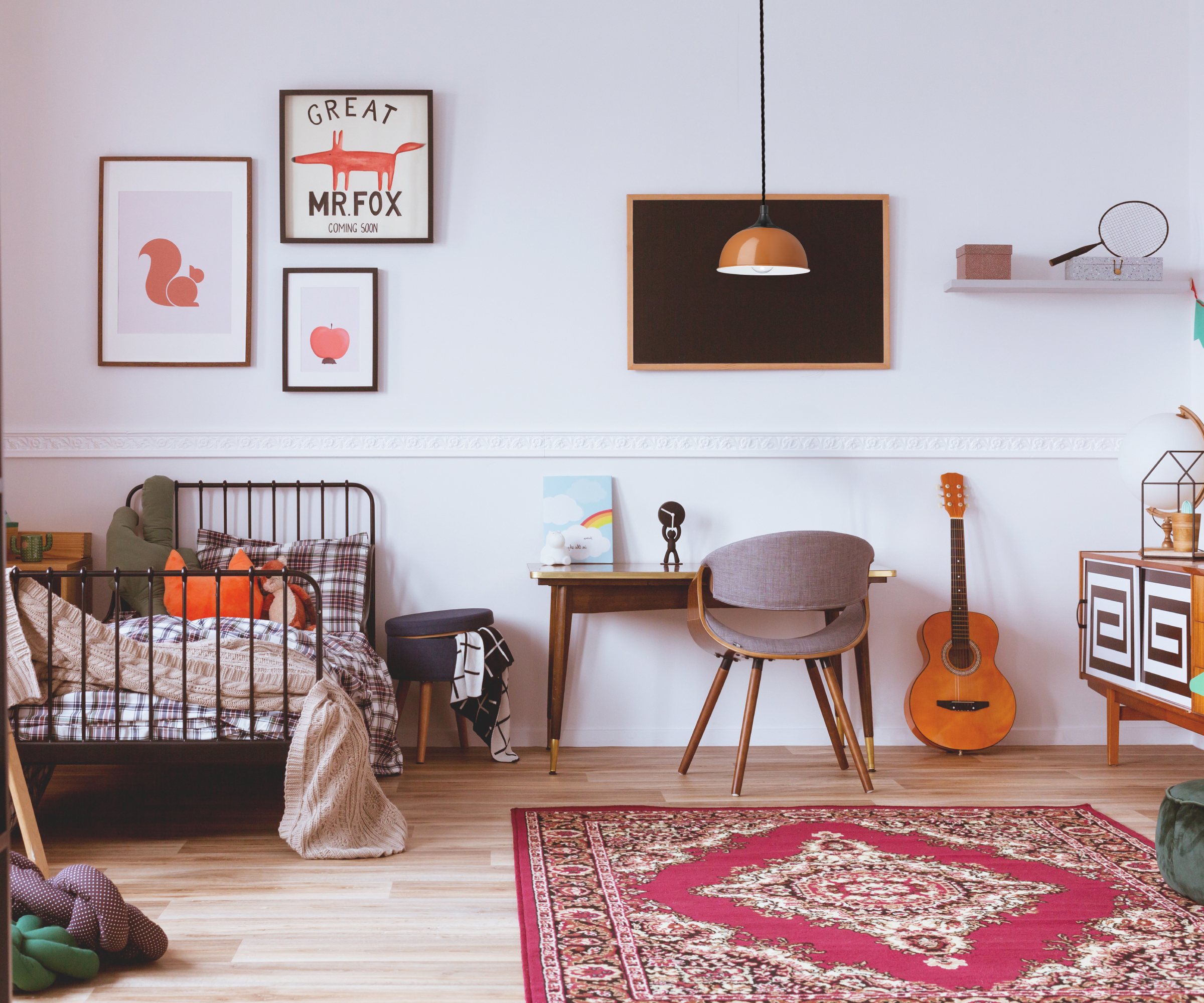
"Opt for playful, cordless lighting that will encourage sensory play safely without the restriction of wires," is a suggestion from Jo Plant, head of design at Pooky.
"In the centre of the room," she adds, "try a simple fabric pendant shade to give an informal look that offers a good spread of ambient light."
Choosing lights with interchangeable shades can also be another method for adding some longevity to your children's bedroom design, as well as giving you the comfort of knowing you are opting for a more
Smart lighting technology which provides adaptability to different times of the day and activities, promoting optimal lighting conditions and energy efficiency may also be worth considering. Rechargable and battery operated lights can also add some fun to the overall design and are more easily changed than wired-in solutions.
Costs
Although budgeting for a children's bedroom design is a personal choice, it seems budgets for newborn bedrooms may be escalating for reasons other than just the cost of living.
According to recent research from Checkatrade, parents are spending around £2,000 on their dream bedroom in a bid to emulate celebrities’ designer nurseries. One in 10 claim they even would be happy to spend over £5,000 on a renovation, and two in five have dipped into their savings for the occasion.
If you're looking for some budget advice, Checkatrade have installed a calculator on their website called Nursery Numbers where you can pick the size of your room and then pick from a selection of additional features, such as white noise ceiling speakers and blackout blinds in order to get an estimate of what your children's bedroom design might cost.
"There’s been a massive change in what parents want for their kids over the years," says Checkatrade member, painter and decorator, David Couson, from Grand Finishes.
"I often get asked for my advice in bringing some luxury and a point of difference to bedrooms, as well as what small, cost-effective changes can be made to make a big impact on a room.
"Personally, I'd always advise to make one sweeping change, whether you’re painting a wall or installing an interesting light fixture, and then concentrate on the details to keep costs down," says David.
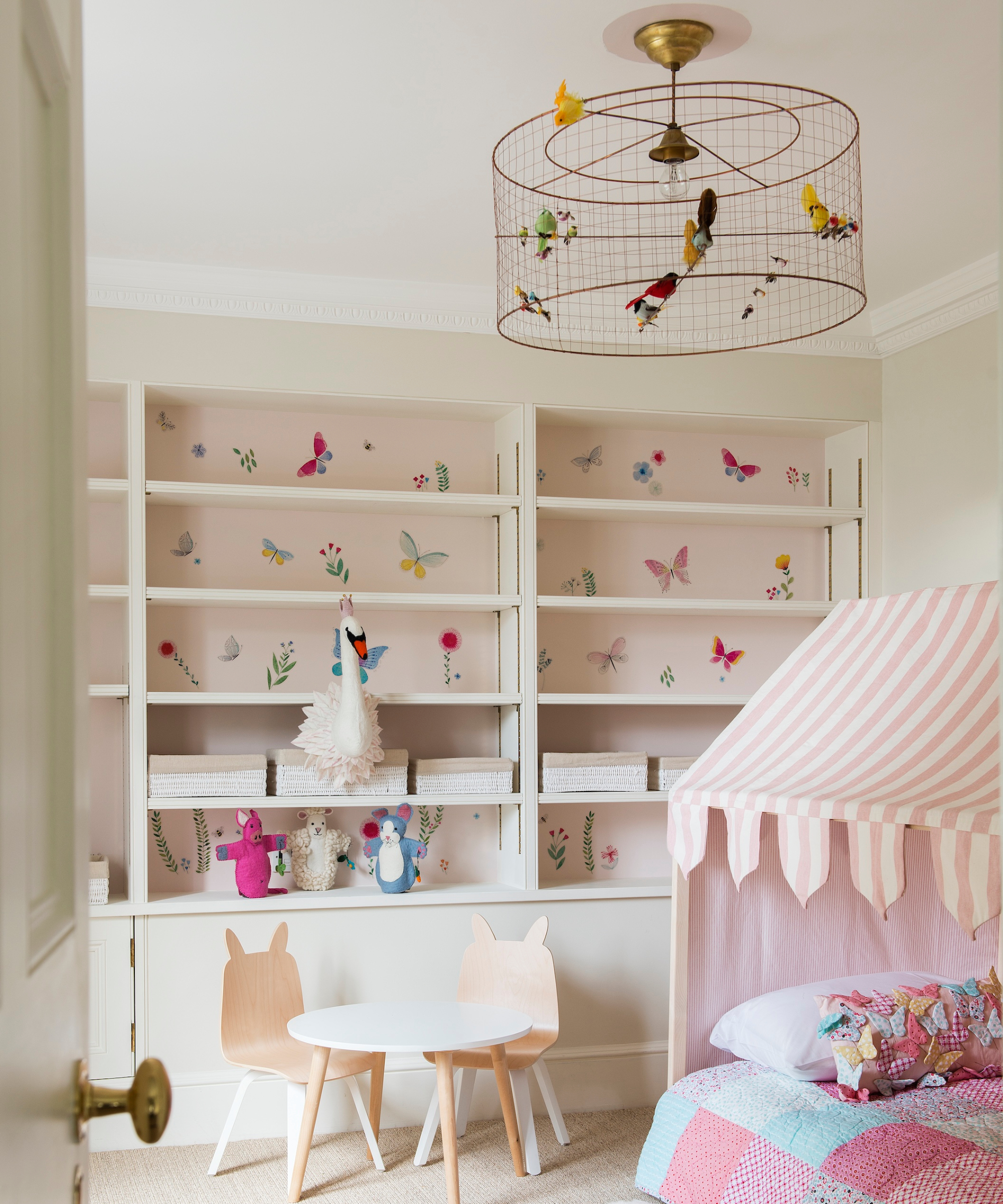
Have older children and considering relocating them to your loft? Take a look at some bedroom loft conversion ideas, as well as shared kid bedroom ideas to get the most out of your floorplan. Or, if you're looking at ways to add extra bedroom space to accomodate a growing family, find out how much does an extension cost in our comprehensive guide.

Sarah is Homebuilding & Renovating’s Assistant Editor and joined the team in 2024. An established homes and interiors writer, Sarah has renovated and extended a number of properties, including a listing building and renovation project that featured on Grand Designs. Although she said she would never buy a listed property again, she has recently purchased a Grade II listed apartment. As it had already been professionally renovated, she has instead set her sights on tackling some changes to improve the building’s energy efficiency, as well as adding some personal touches to the interior.
